In November 1966, with the Gemini program successfully completed, NASA set its sights on the first Apollo mission to carry a crew. The mission, officially designated as AS-204, later became known as Apollo 1. NASA assigned Mercury 4 and Gemini 3 veteran Virgil I. “Gus” Grissom, Gemini IV veteran and the first American to conduct a spacewalk Edward H. White, and spaceflight rookie Roger B. Chaffee, as the crew to fly this important mission, with Gemini IV veteran James A. McDivitt, Gemini VIII veteran David R. Scott, and rookie Russell L. Schweickart as their backups. The mission, planned as an open-ended flight lasting up to 14 days, was targeted for launch sometime in the first quarter of 1967. The crew trained extensively for the mission, including vacuum chamber testing of their spacecraft and practicing water egress from the capsule.
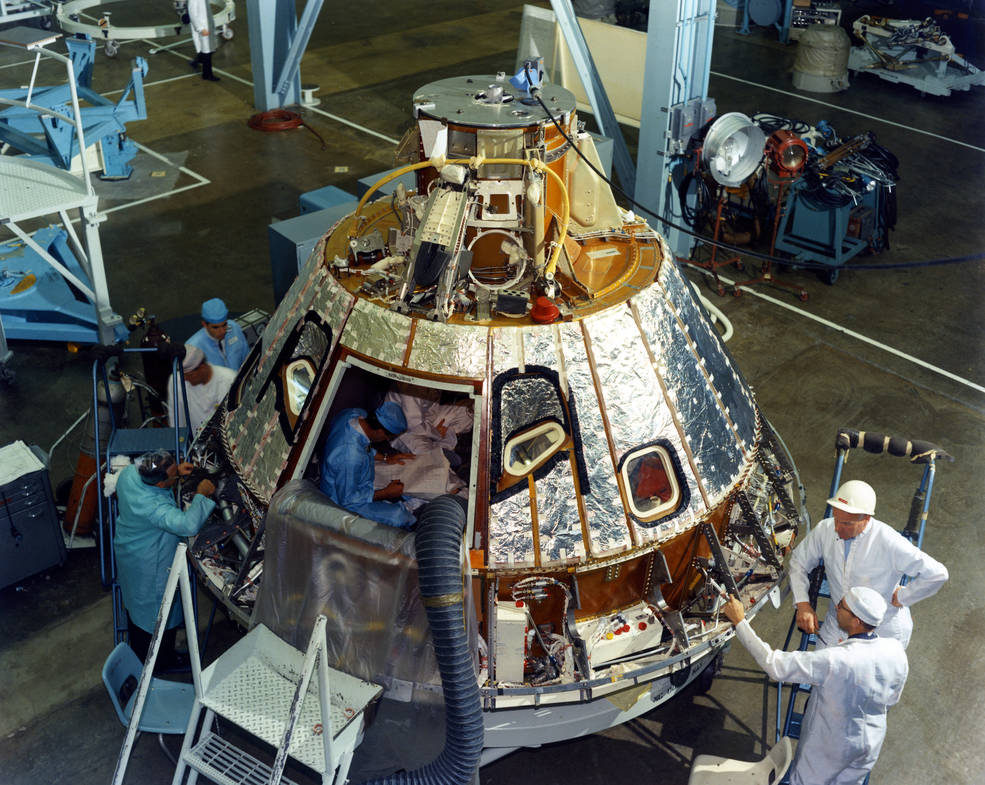
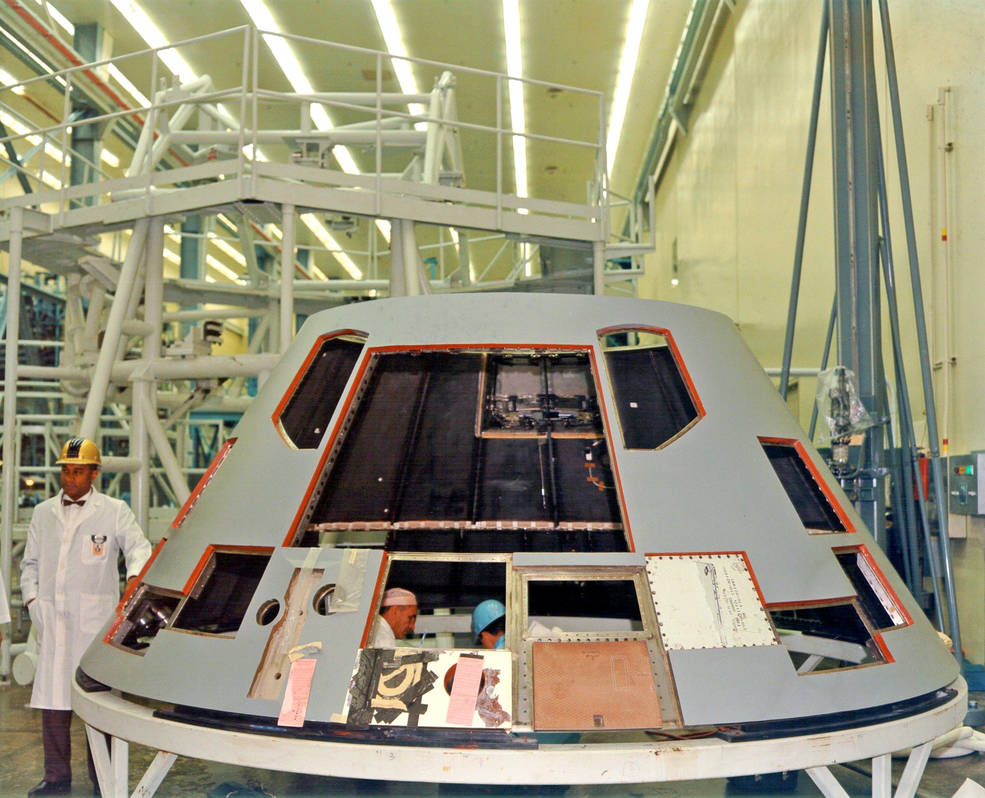
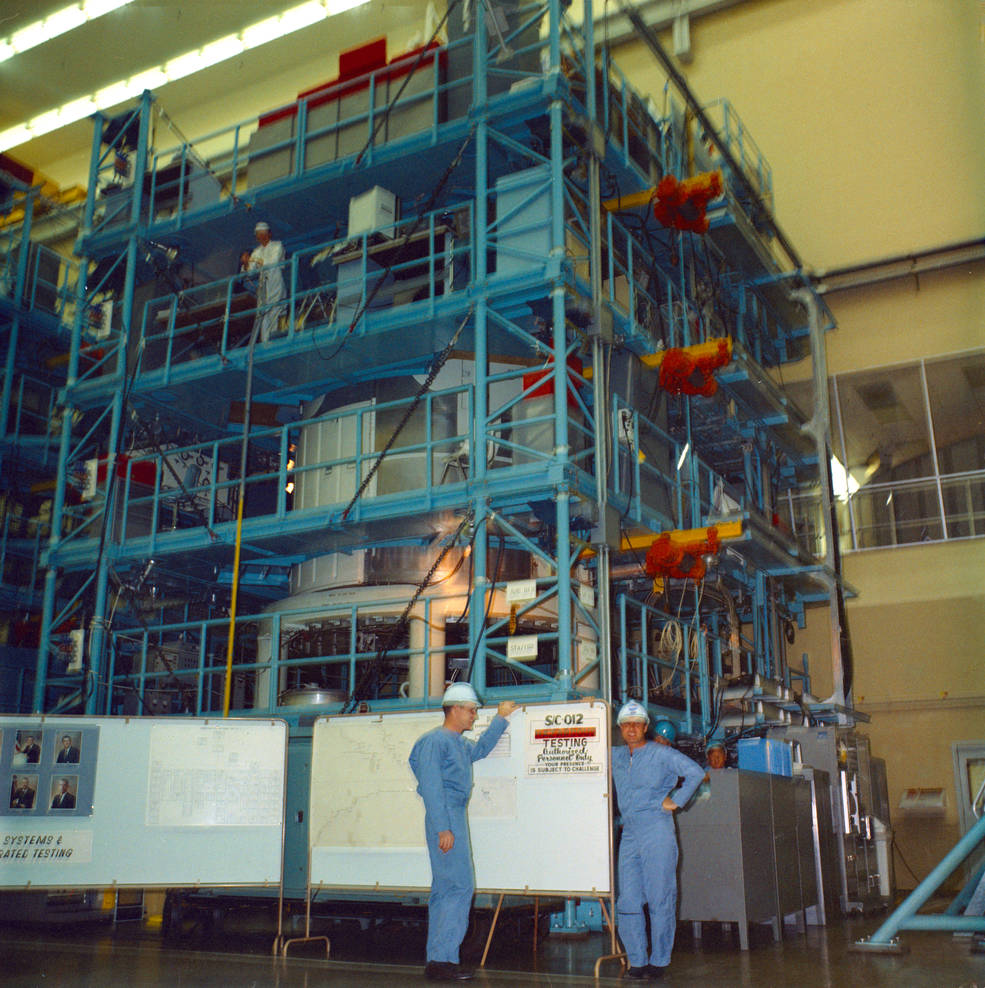
Left: At the North American Aviation plant in Downey, California, workers prepare the Command
Module 012 (CM-012). Middle: At the Downey plant, engineers work on the CM-012 heat shield.
Right: Astronauts Edward H. White, left, and Virgil I. “Gus” Grissom stand in front
of Service Module-012 at the Downey plant.
Planning for Apollo began in 1961, even before President John F. Kennedy’s call to land a man on the Moon before the end of the decade. NASA awarded the contract to build the Apollo spacecraft to North American Aviation in Downey, California. North American planned to build two versions of Apollo to carry a crew – astronauts would test out the basic spacecraft in Earth orbit in the Block I version, while the later, more advanced Block II version, equipped with a docking system, would take astronauts to the Moon. Following two uncrewed suborbital tests of the Apollo spacecraft in February and August 1966, AS-201 and AS-202, respectively, AS-204 was to be the first Block I to carry astronauts into Earth orbit. North American began construction of Command Module (CM) 012, the spacecraft assigned to AS-204, at its Downey plant in August 1964. Following extensive testing, with the active participation of the astronauts assigned to the mission, in August 1966, NASA and North American cleared the spacecraft for shipment to NASA’s Kennedy Space Center (KSC) in Florida. Engineers completed additional work at the launch site to prepare the spacecraft for its spaceflight.
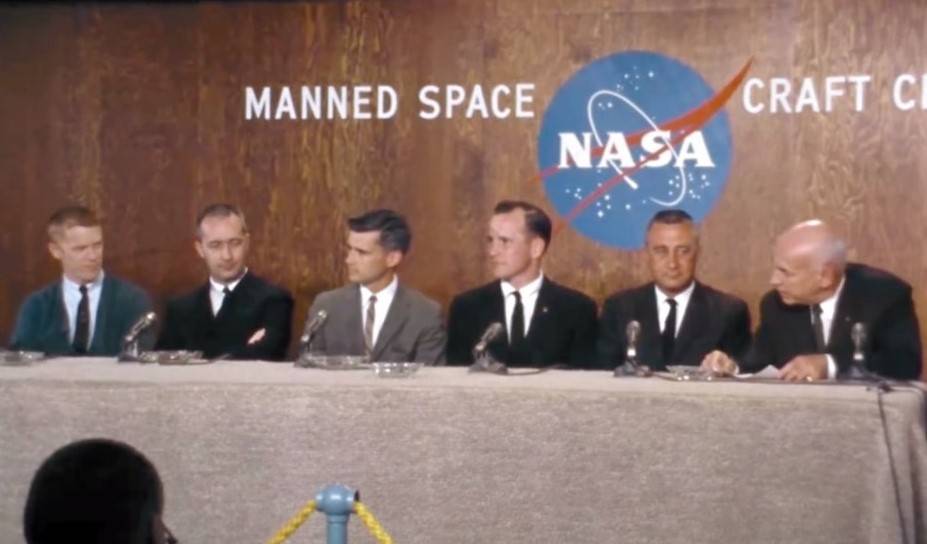
During a March 1966 press conference, director of the Manned
Spacecraft Center, now NASA’s Johnson Space Center in Houston,
Robert R. Gilruth, right, introduces the prime and back up crews
for the first Apollo – Russell L. Schweickart, left, James A.
McDivitt, Roger B. Chaffee, Edward H. White, and Virgil I.
“Gus” Grissom. The sixth crew member, David R. Scott, could
not attend the event as he had just returned from the
Gemini VIII mission.
Following the first successful flight of a Saturn IB rocket carrying an uncrewed Apollo spacecraft on a suborbital mission during the February 1966 AS-201 mission, NASA formally announced the astronauts assigned to the first crewed Apollo mission. During a press conference on March 21, 1966, director of the Manned Spacecraft Center (MSC), now NASA’s Johnson Space Center in Houston, Robert R. Gilruth introduced Grissom, White, and Chaffee and their backups McDivitt, Scott, and Schweickart to reporters. Scott, who had just returned from the harrowing Gemini VIII mission, could not attend the press conference since he was still busy with postflight debriefs. Gilruth described the first Apollo flight as “open-ended,” with mission managers evaluating the status of the crew and spacecraft each orbit for the first six orbits to determine whether the flight could continue. If all continued to go well, managers would then reassess daily, with the potential for the flight to last up to 14 days. The main goals of the mission were to prove the space worthiness of the craft, and to test the Service Module’s large engine, which on future lunar missions would perform the critical tasks to insert the spacecraft into lunar orbit and then send the astronauts homeward.
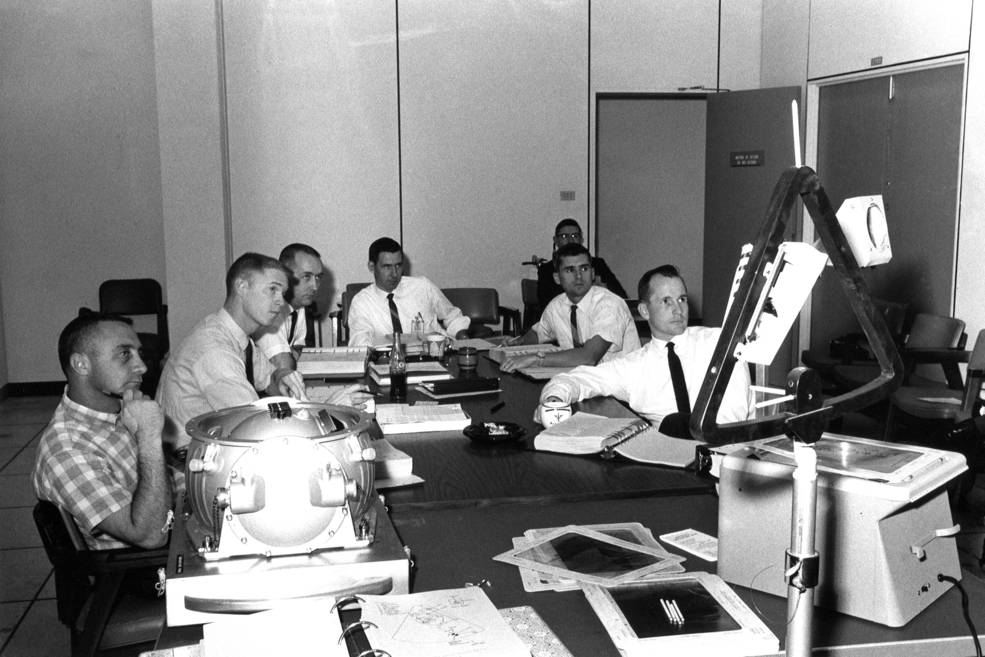
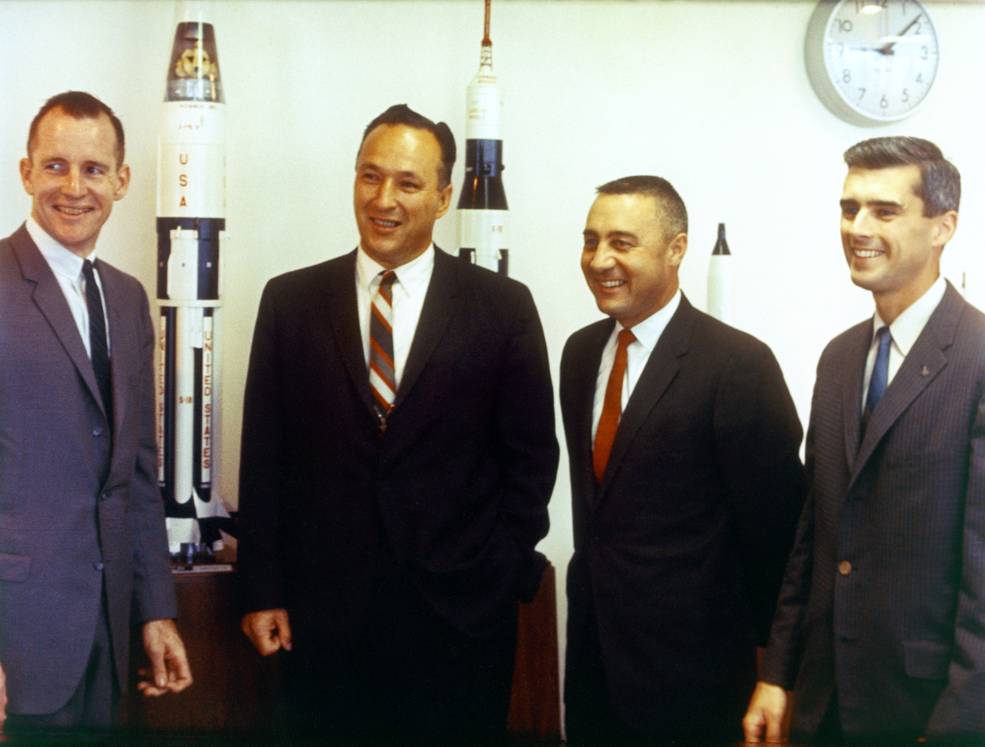
Left: Prime and backup crew members assigned to the AS-204 or Apollo 1 mission,
Virgil I. “Gus” Grissom, left, Russell L. Schweickart, James A. McDivitt, an
unidentified official, Roger B. Chaffee, and Edward H. White, attend a
training briefing in March 1966. David R. Scott could not attend as he
was in training for the Gemini VIII mission. Right: In April 1966,
White, left, Grissom, and Chaffee meet with Lee B. James, Saturn
IB program manager, second from left, at NASA’s Marshall Space
Flight Center in Huntsville, Alabama, for a three-day study
of the rocket.
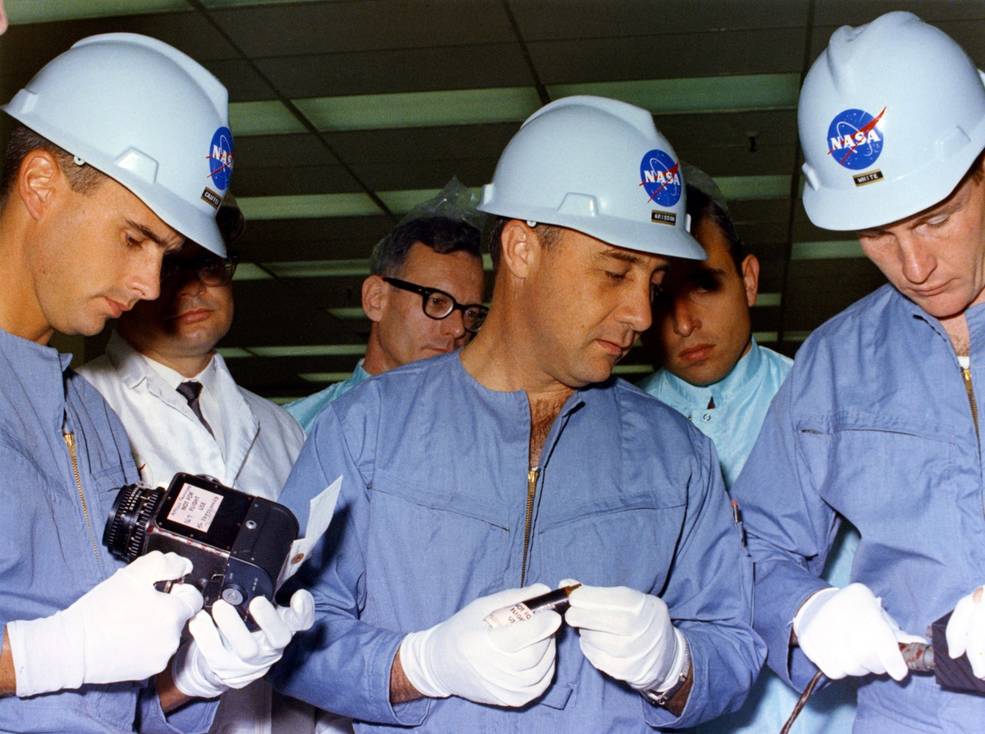
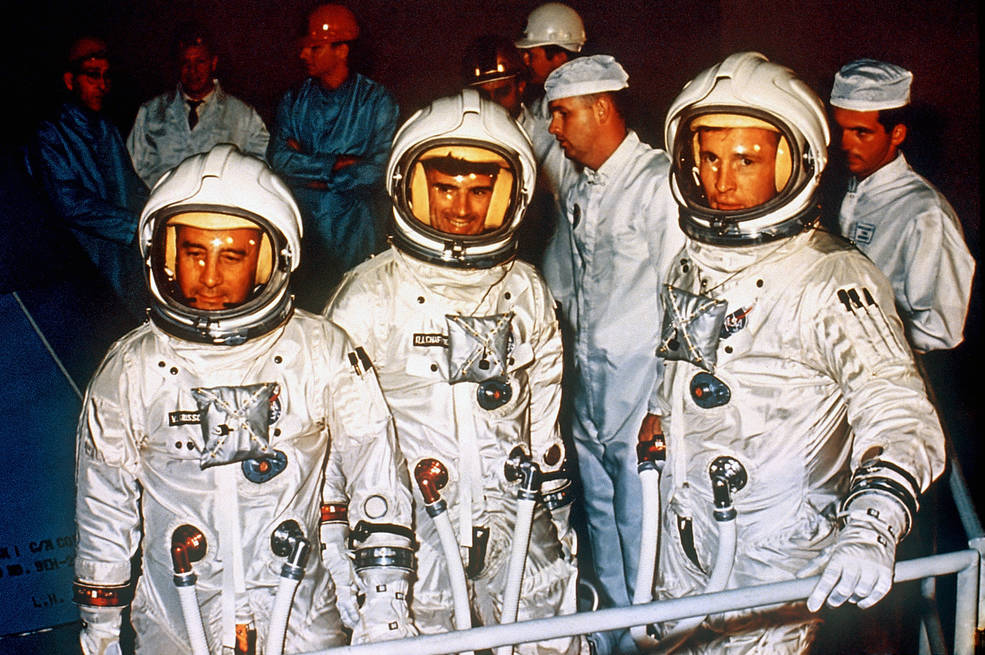
Left: In June 1966, at the North American Aviation plant in Downey, California,
Apollo 1 astronauts Roger B. Chaffee, left, Virgil I. “Gus” Grissom, and Edward
H. White review equipment to be stowed in their spacecraft. Right: In Downey in
August 1966, Grissom, left, Chaffee, and White prepare for their final session
in their spacecraft before it is shipped to the launch site in Florida.
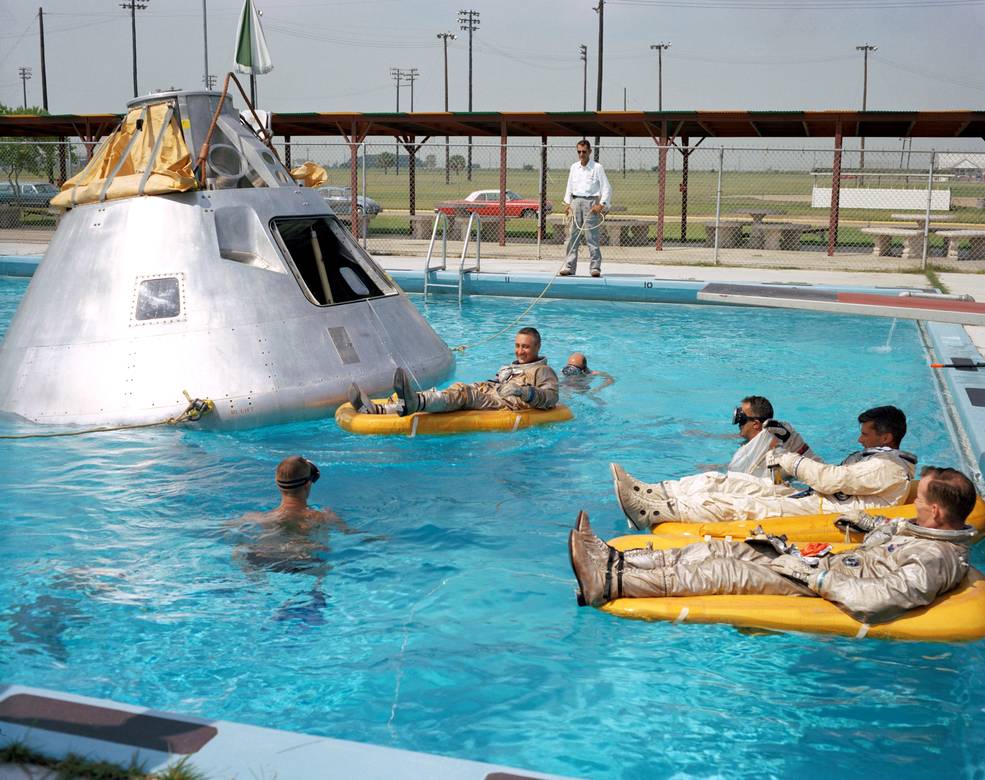
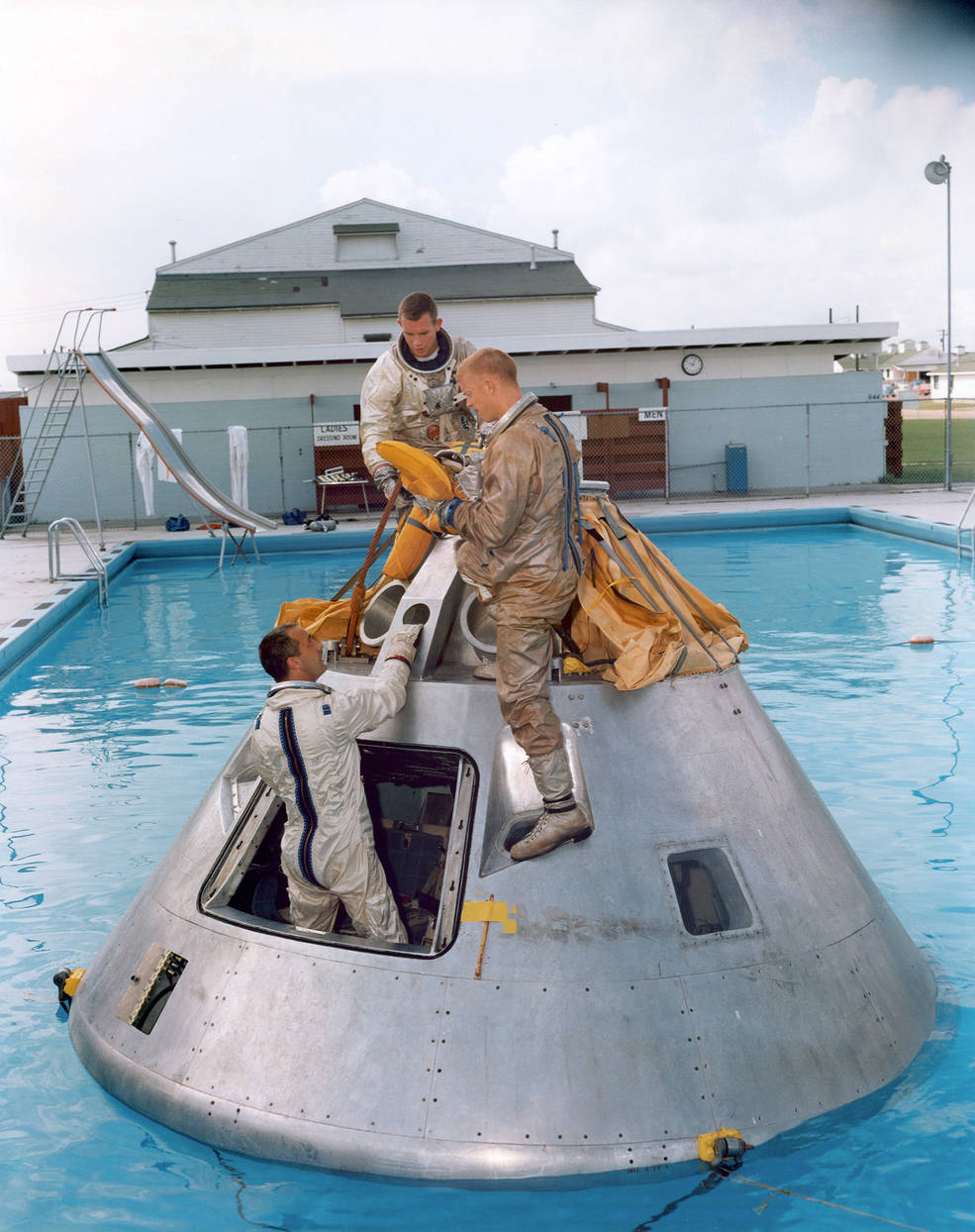
Left: Prime crew for the Apollo 1 mission Virgil I. “Gus” Grissom, left, Roger B. Chaffee,
and Edward H. White practice post-splashdown egress procedures using a mockup
spacecraft in a pool at Ellington Air Force Base in Houston in June 1966.
Right: The backup crew for the Apollo 1 mission, James A. McDivitt, left,
David R. Scott, and Russell L. Schweickart practice the egress procedures
in the pool at Ellington in September 1966.
Although officially announced as a crew in March, Grissom, White, and Chaffee had begun training for their mission several months earlier. Much of that training involved spending time with their spacecraft under construction at North American in Downey. Additional training included classroom lectures on the spacecraft’s systems, celestial navigation, human physiology, and other aspects of human spaceflight. They received instruction about their Saturn IB rocket from specialists in the Saturn Program Office at NASA’s Marshall Space Flight Center in Huntsville, Alabama. They trained for various aspects of their flight in the Apollo CM simulators located at both MSC in Houston and KSC in Florida. To practice for their splashdown and getting out of their spacecraft, the astronauts initially practiced with a mockup capsule in a swimming pool at Ellington Air Force Base near MSC. They later added more realism by practicing the spacecraft egress procedures in the Gulf of Mexico near Galveston, Texas.
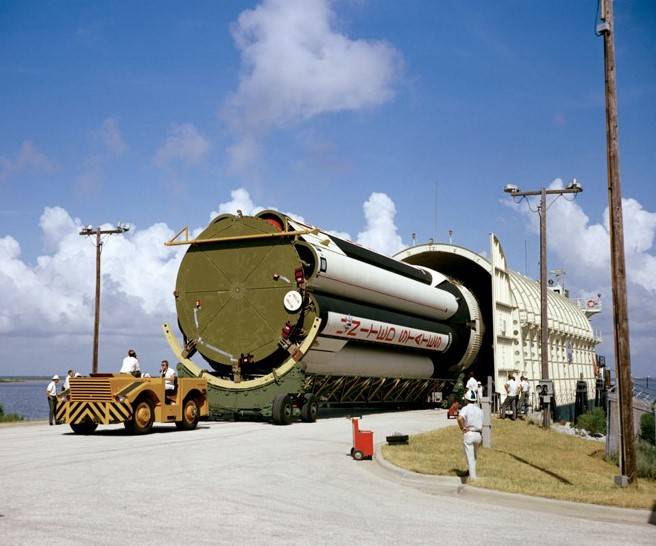
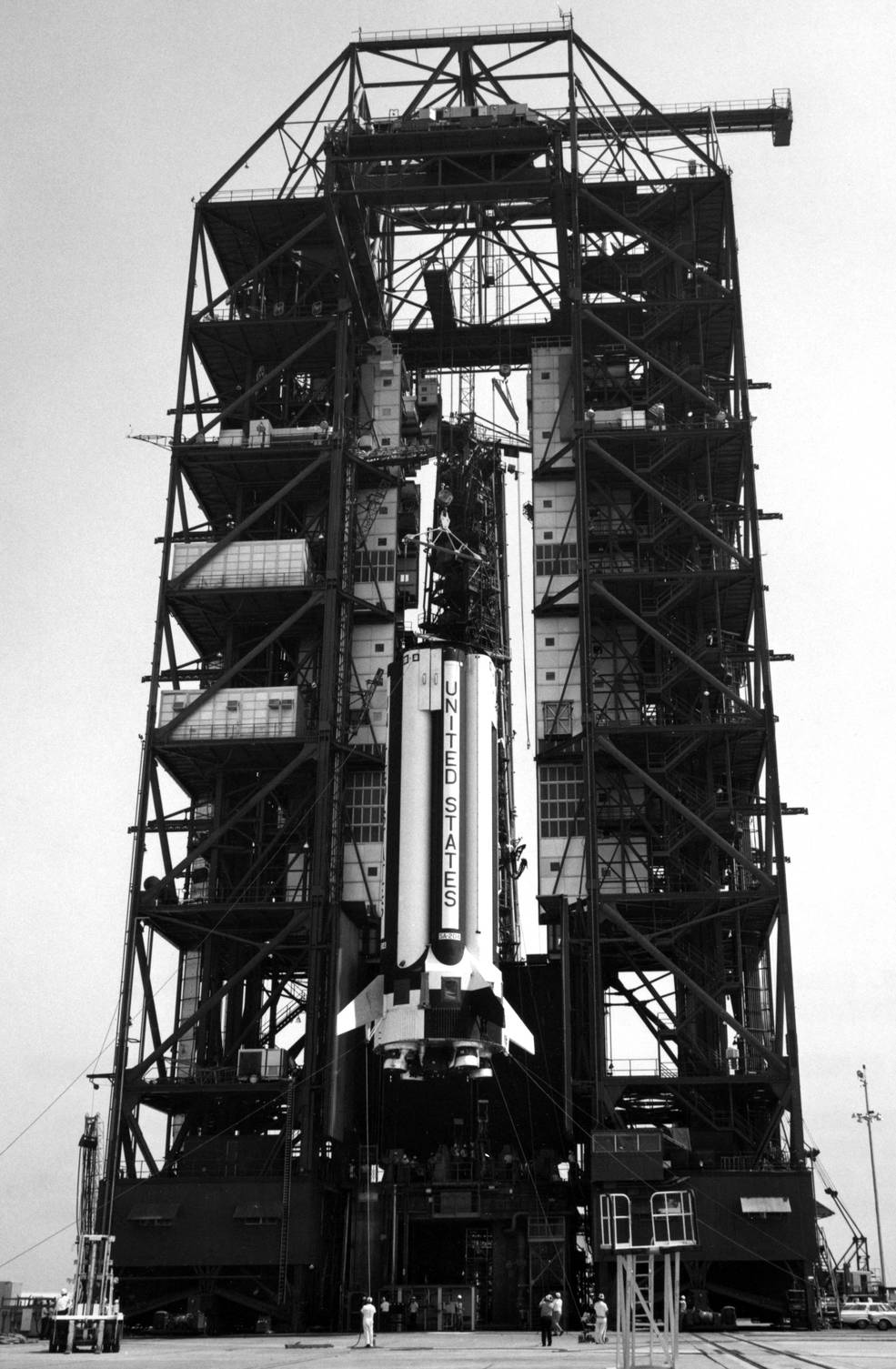
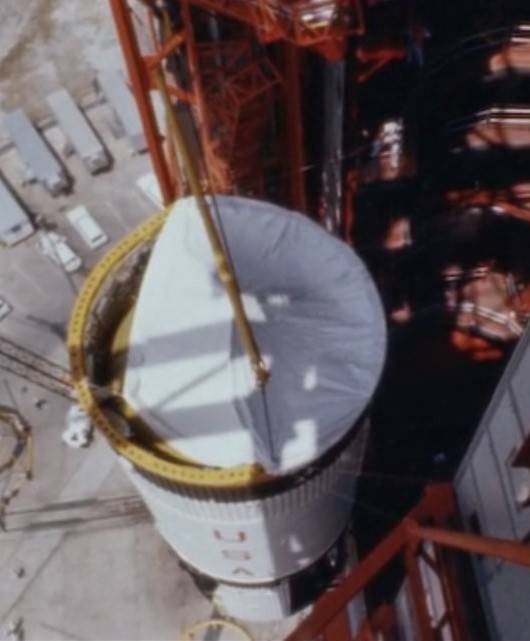
Left: The S-IB first stage for the AS-204 Saturn IB rocket arrives at Cape Kennedy Air Force Station,
now Cape Canaveral Space Force Station, in Florida, in August 1966. Middle: Ground crews stack the
first stage onto the pedestal at Launch Pad 34. Right: Workers lift the rocket’s S-IVB second
stage for stacking onto the first stage.
Assembly of the Saturn IB rocket for the AS-204 mission began in August 1966, with the arrival of the S-IVB second stage at Cape Kennedy Air Force Station (CKAFS), now Cape Canaveral Space Force Station, in Florida, on Aug. 6. The S-IB first stage arrived by barge on Aug. 15, and after inspections, workers installed it on Launch Pad 34 on Aug. 29, followed two days later by the S-IVB second stage. Engineers thoroughly tested the rocket during its time on the pad, as it awaited the arrival of the spacecraft, scheduled for early January 1967, after it completed a series of tests at KSC.
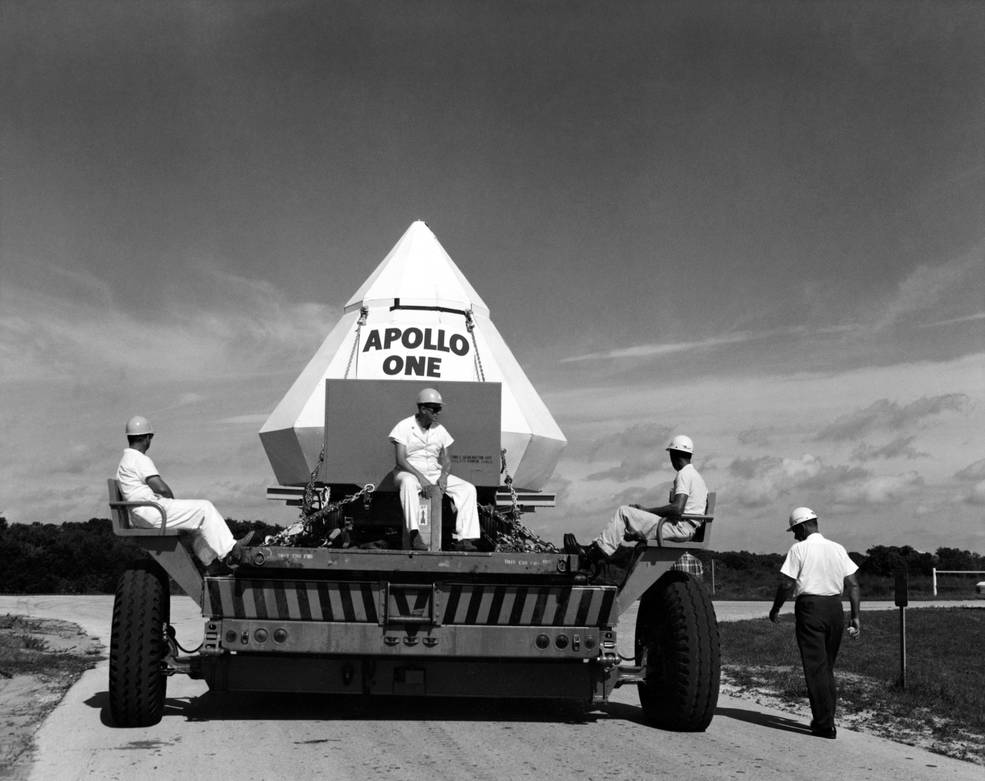
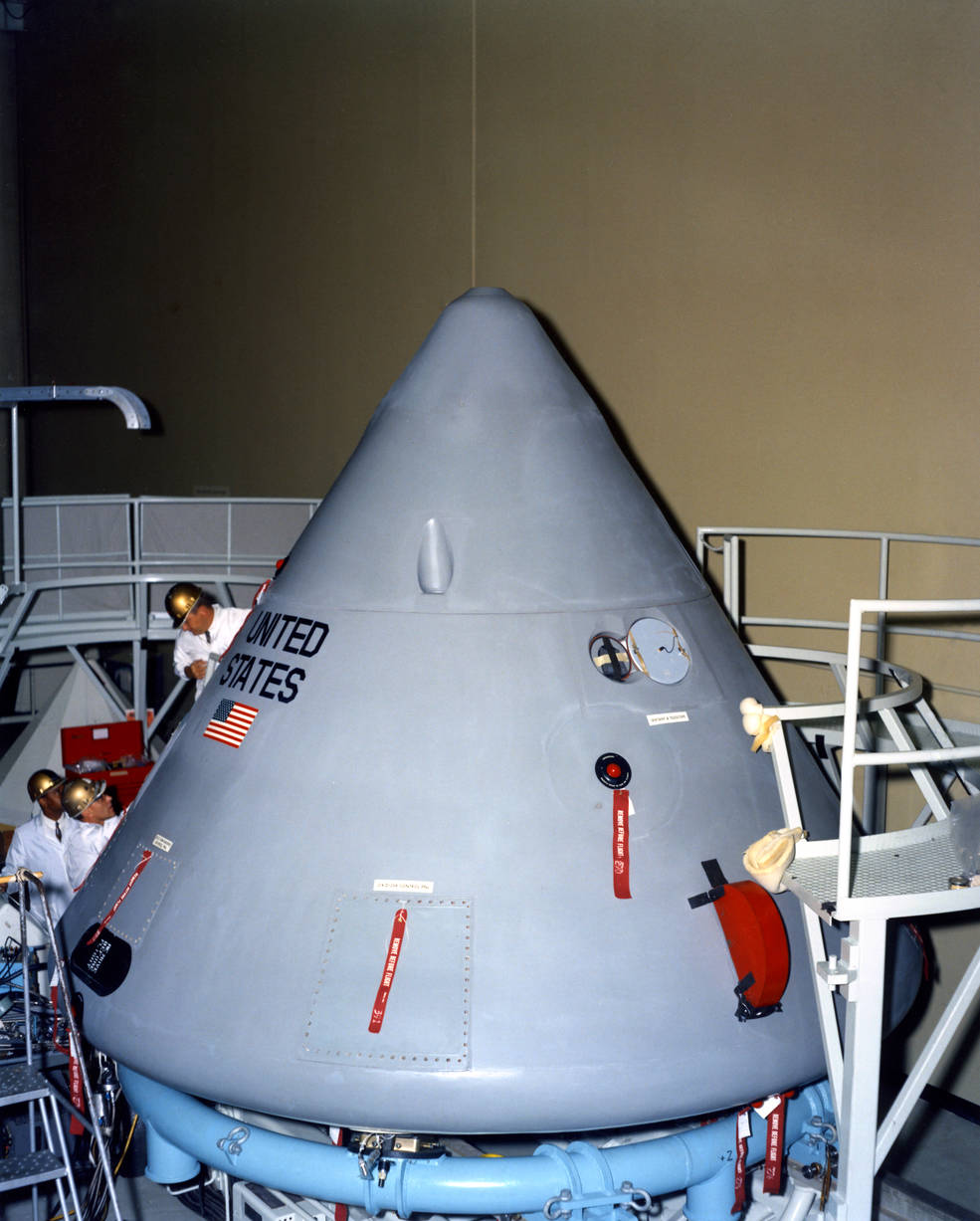
Left: The Apollo Command Module (CM) 012 arrives at NASA’s Kennedy Space
Center (KSC)in Florida in August 1966. Right: Engineers check out the
Apollo CM-012 in KSC’s Manned Spacecraft Operations Building
shortly after its arrival.
The Apollo CM-012 spacecraft arrived by plane from Downey at KSC on Aug. 26, 1966, followed three days later by its Service Module. Engineers mated the two components and placed the joined spacecraft into an altitude chamber in the Manned Spacecraft Operations Building (MSOB) for initial testing in September.
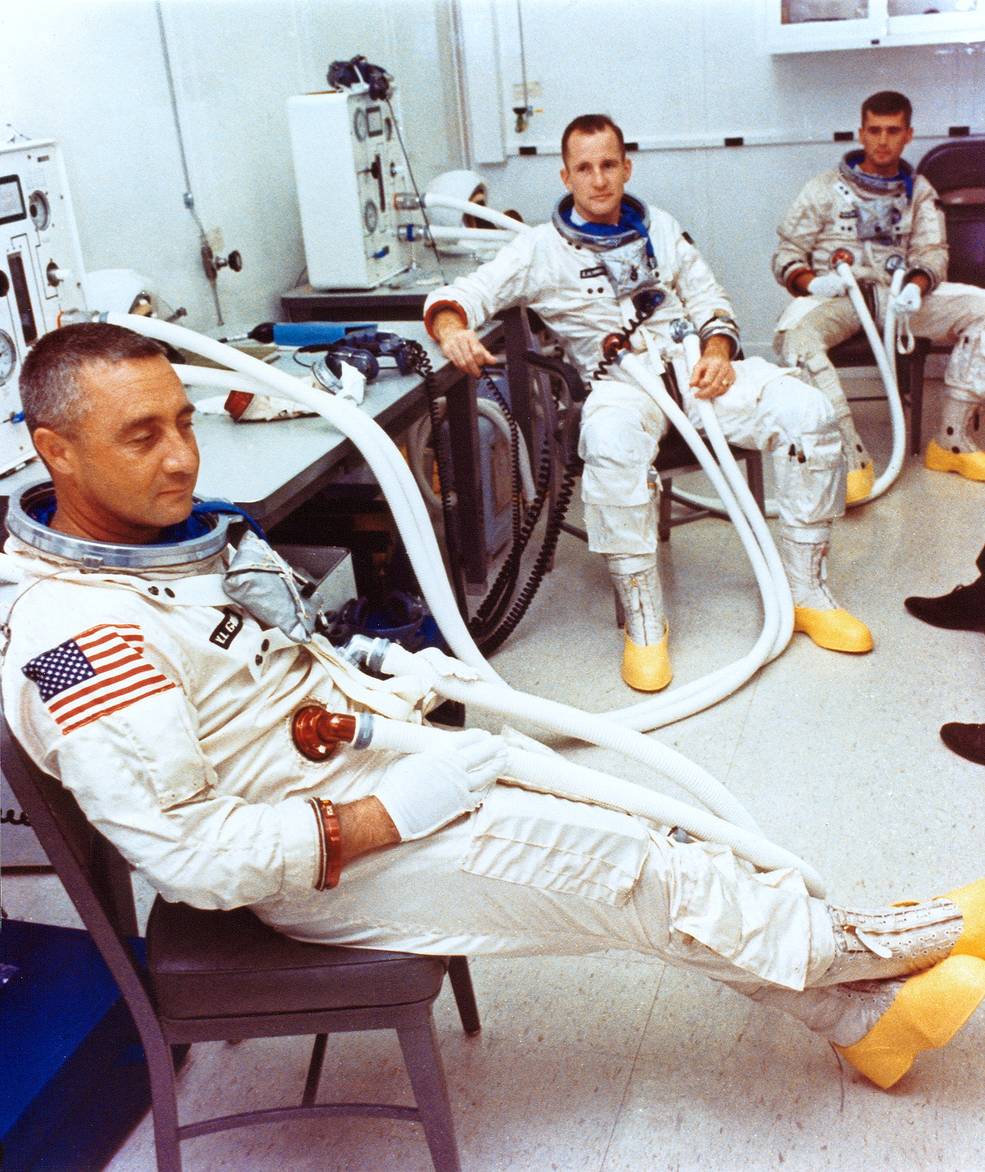
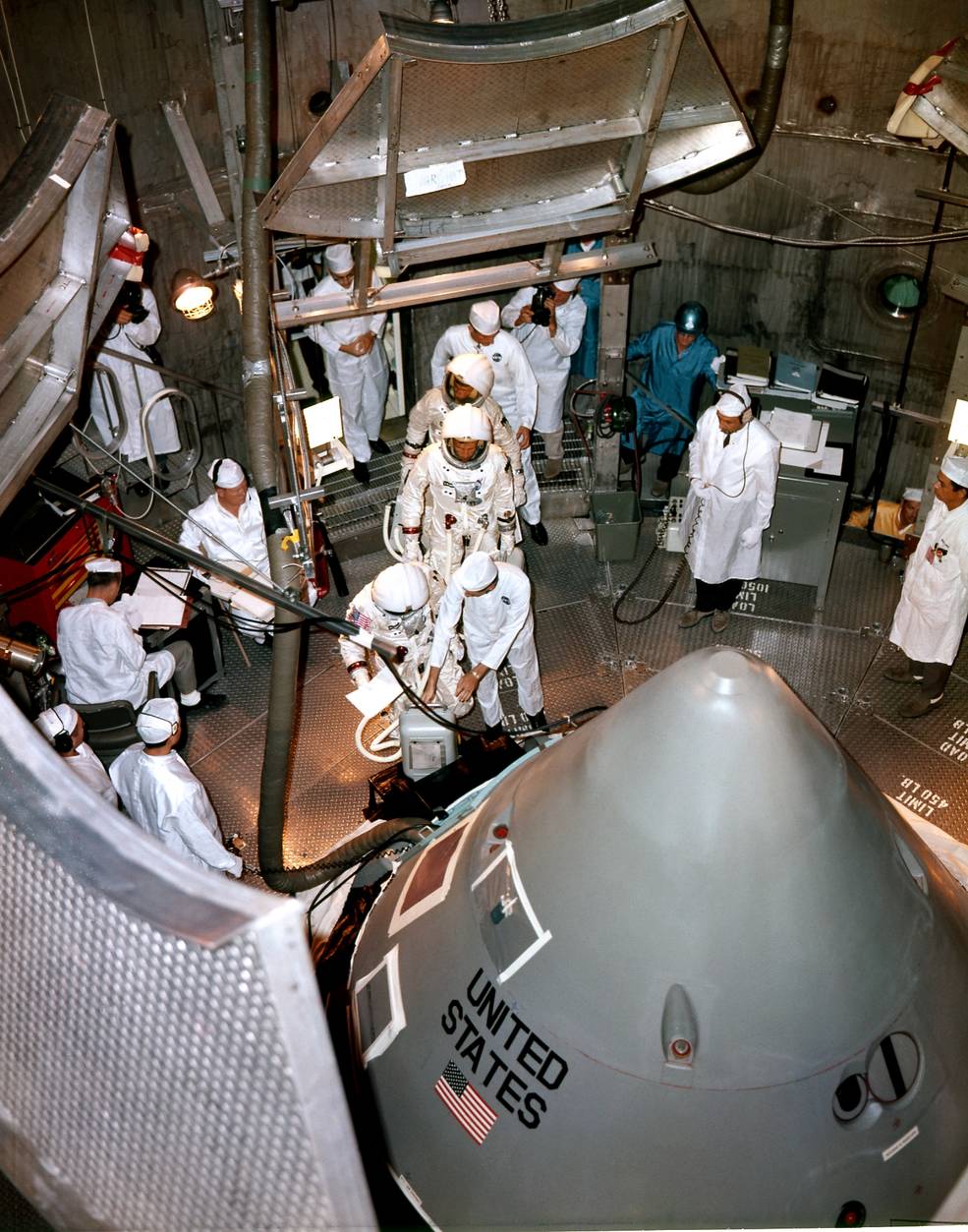
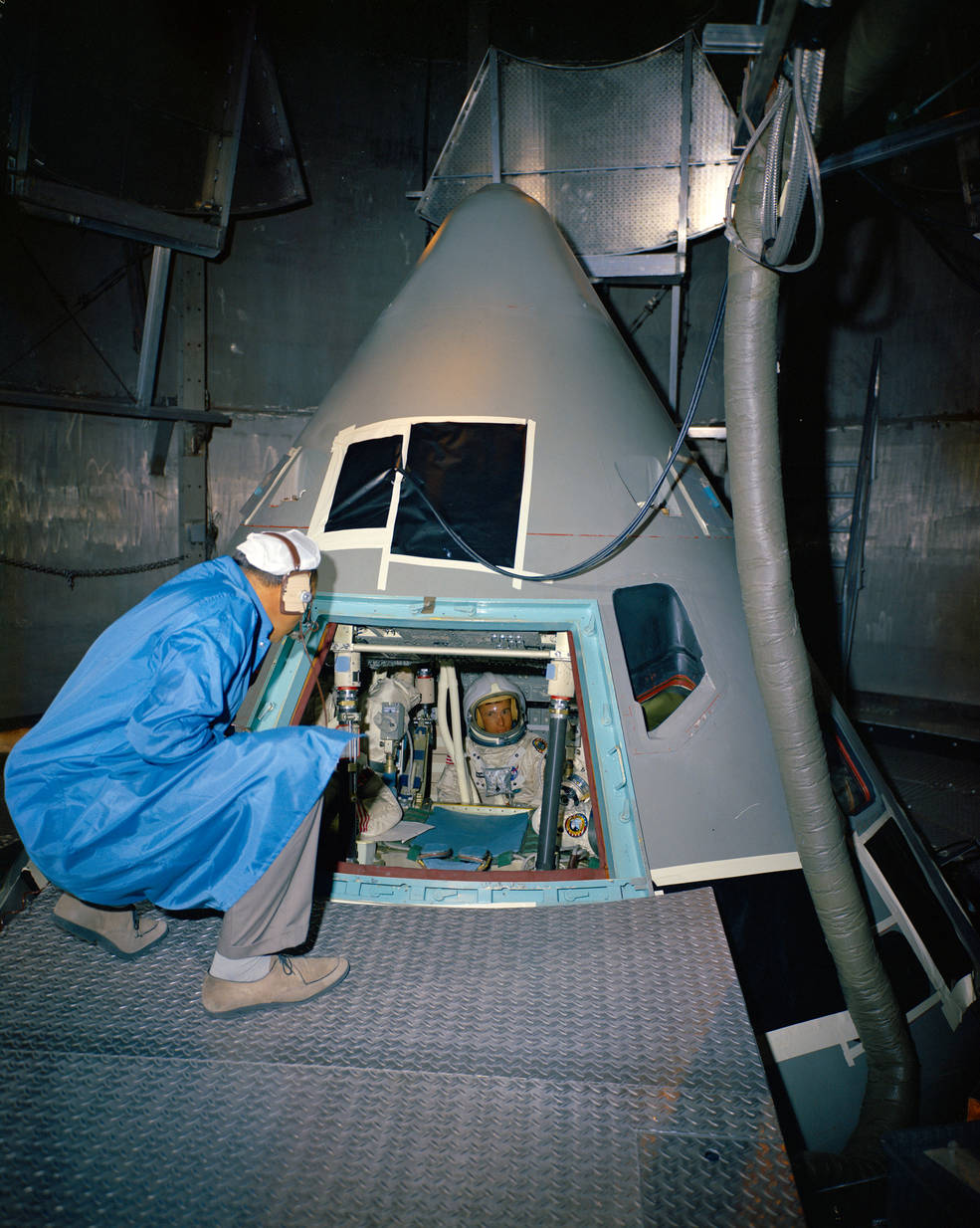
Left: In the Manned Spacecraft Operations Building at NASA’s Kennedy Space Center in Florida,
crew members for the first Apollo mission Virgil I. “Gus” Grissom, left, Edward H. White,
and Roger B. Chaffee don their spacesuits for vacuum chamber testing of their spacecraft,
Command Module (CM) 012. Middle: Grissom, front, White, and Chaffee in the altitude
chamber for their spacecraft’s vacuum test. Right: In the altitude chamber, a
technician peers into CM-012, with Grissom, left, White, and Chaffee
inside, prior to the test.
In a vacuum chamber in KSC’s MSOB, after an initial sea-level test, on Oct. 18, Grissom, White, and Chaffee, wearing full pressure suits, completed an altitude run inside their CM-012 spacecraft to verify its pressure integrity. McDivitt, Scott, and Schweickart completed a similar test a few days later.
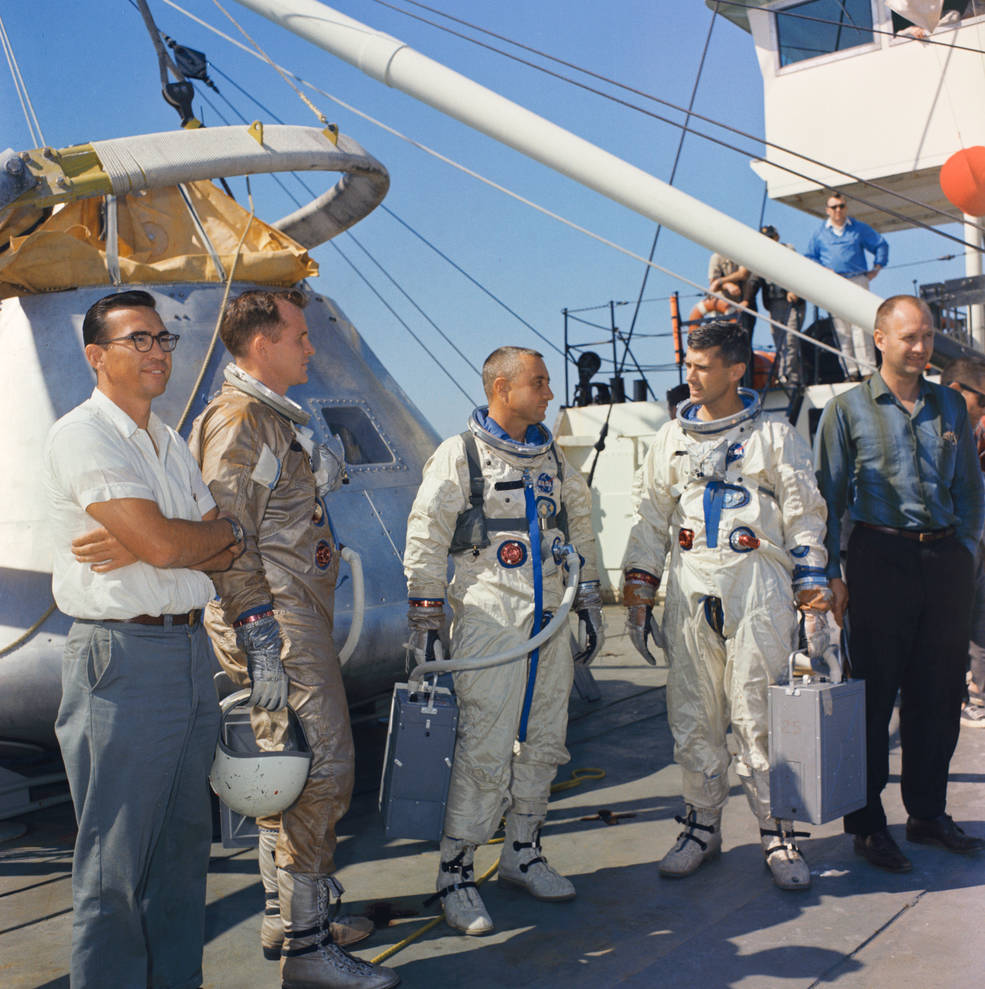
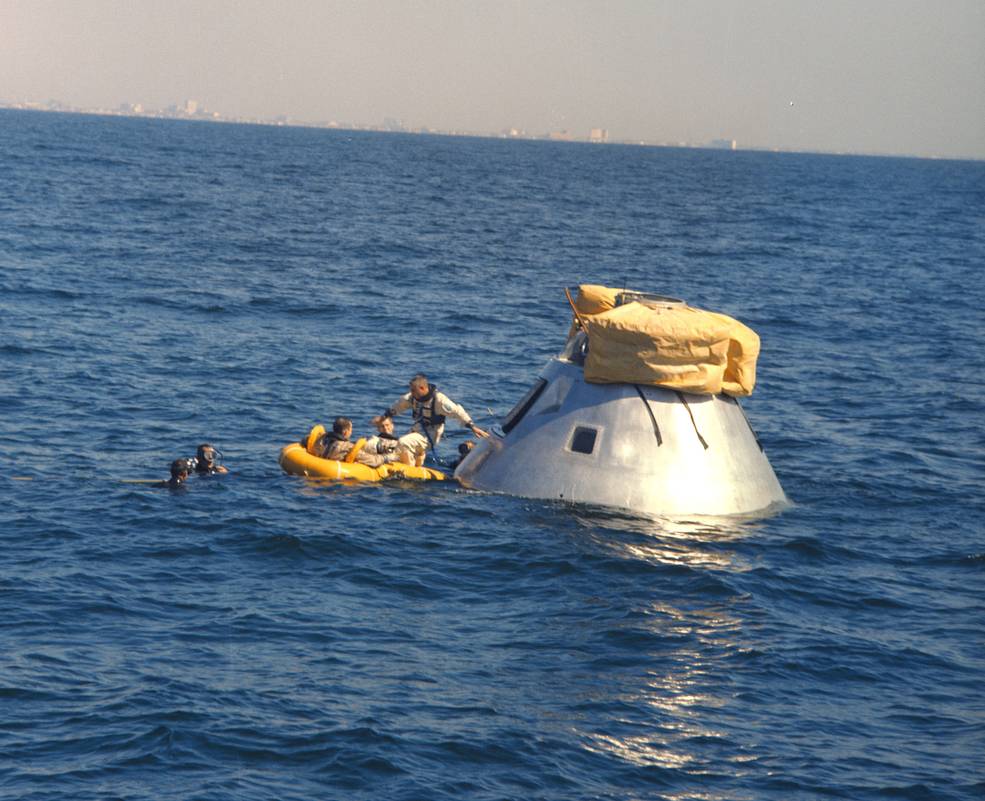
Left: Apollo 1 astronauts Edward H. White, left, Virgil I. “Gus” Grissom, and Roger B. Chaffee
aboard the MV Retriever preparing for water egress training in the Gulf of Mexico.
Right: White, left, Chaffee, and Grissom in life rafts during the water egress training.
On Oct. 27, Grissom, White, and Chaffee rehearsed water egress procedures in the Gulf of Mexico using Apollo boilerplate capsule 1102. Workers from MSC’s Landing and Recovery Division supervised the exercise supported by the Motor Vessel (MV) Retriever and the U.S. Coast Guard off the coast of Galveston, Texas. After the astronauts boarded the spacecraft, crews on the MV Retriever closed the capsule’s hatch and lowered it into the water in the Stable II or apex down position. The astronauts commanded three balloons to inflate to right the spacecraft into the Stable I or apex up position. They then egressed from the capsule onto life rafts, from which Coast Guard helicopter crews picked them up. The backup crew of McDivitt, Scott, and Schweickart completed the same training the following day.
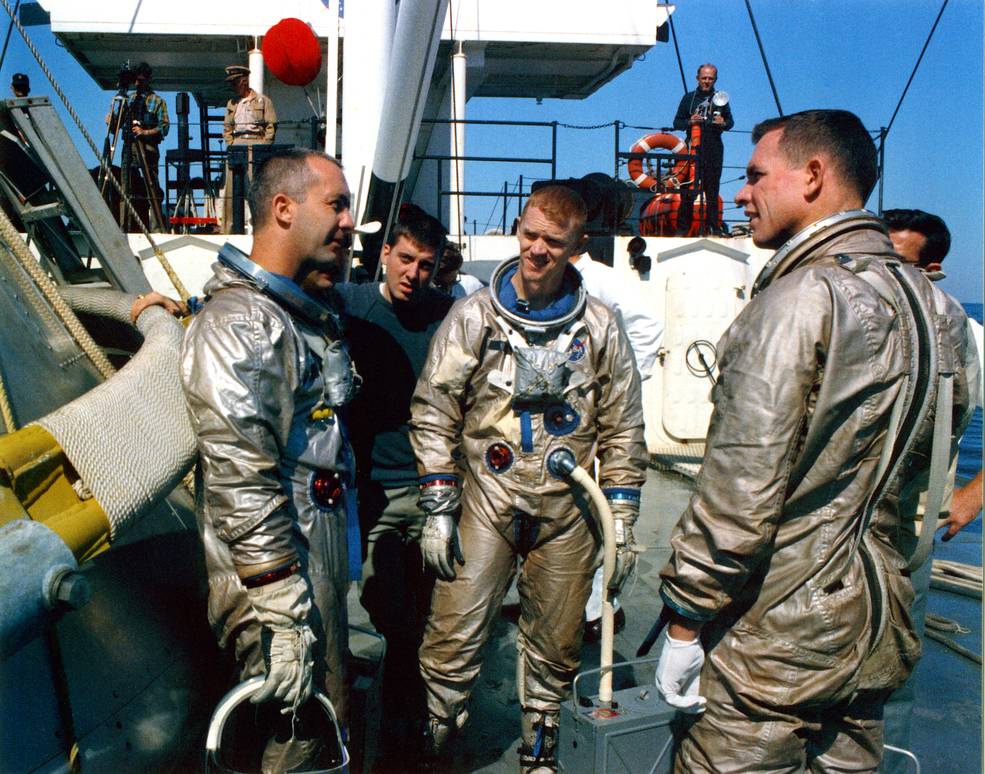
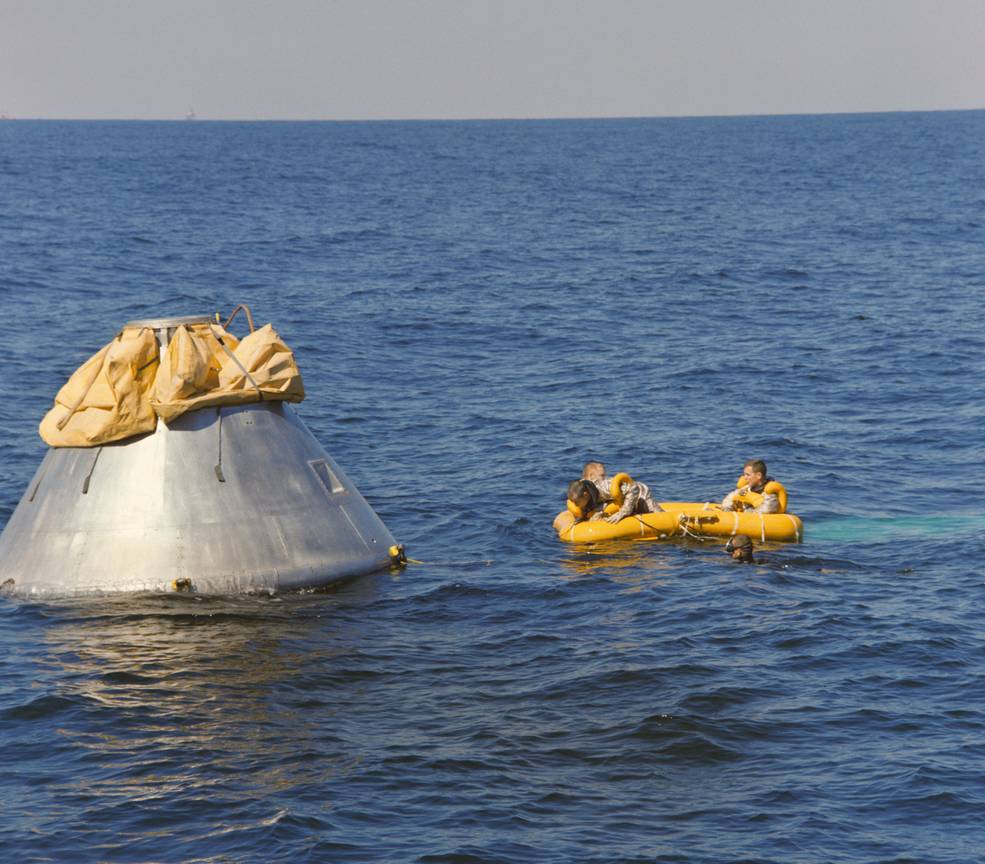
Left: Apollo 1 backup astronauts James A. McDivitt, left, Russell L. Schweickart, and
David R. Scott aboard the MV Retriever preparing for water egress training in the Gulf
of Mexico. Right: McDivitt, left, Schweickart, and Scott in life rafts during
the water egress training.
To be continued…
World events in November 1966:
November 1 – The National Football League awards a franchise to New Orleans, called the Saints.
November 2 – The Cuban Adjustment Act comes into force, allowing 123,000 Cubans to apply for permanent residence in the U.S.
November 4 – Flooding of the Arno River in Florence, Italy, destroys countless works of art.
November 6 – Lunar Orbiter 2 launched to photograph the Moon to document Apollo landing sites.
November 6 – NBC airs the first entire lineup televised in color.
November 7 – The Beatles’ John Lennon meets Yoko Ono.
November 8 – Edward W. Brooke becomes the first African-American elected to the U.S. Senate, from Massachusetts.
November 8 – Film actor Ronald W. Reagan is elected governor of California.
November 11 – Gemini XII launches with James A. Lovell and Edwin E. “Buzz” Aldrin on a four-day flight, the last of the Gemini program.
November 14 – Muhammed Ali TKOs Cleveland Williams to gain the heavyweight title.
November 24 – New York City sees its smoggiest day in recorded history.
November 30 – Barbados gains independence from the United Kingdom.
John Uri
NASA Johnson Space Center


























